Bulk-generate & schedule posts in seconds with Smart Scheduling. Try now!
20 steps to develop an effective content marketing plan
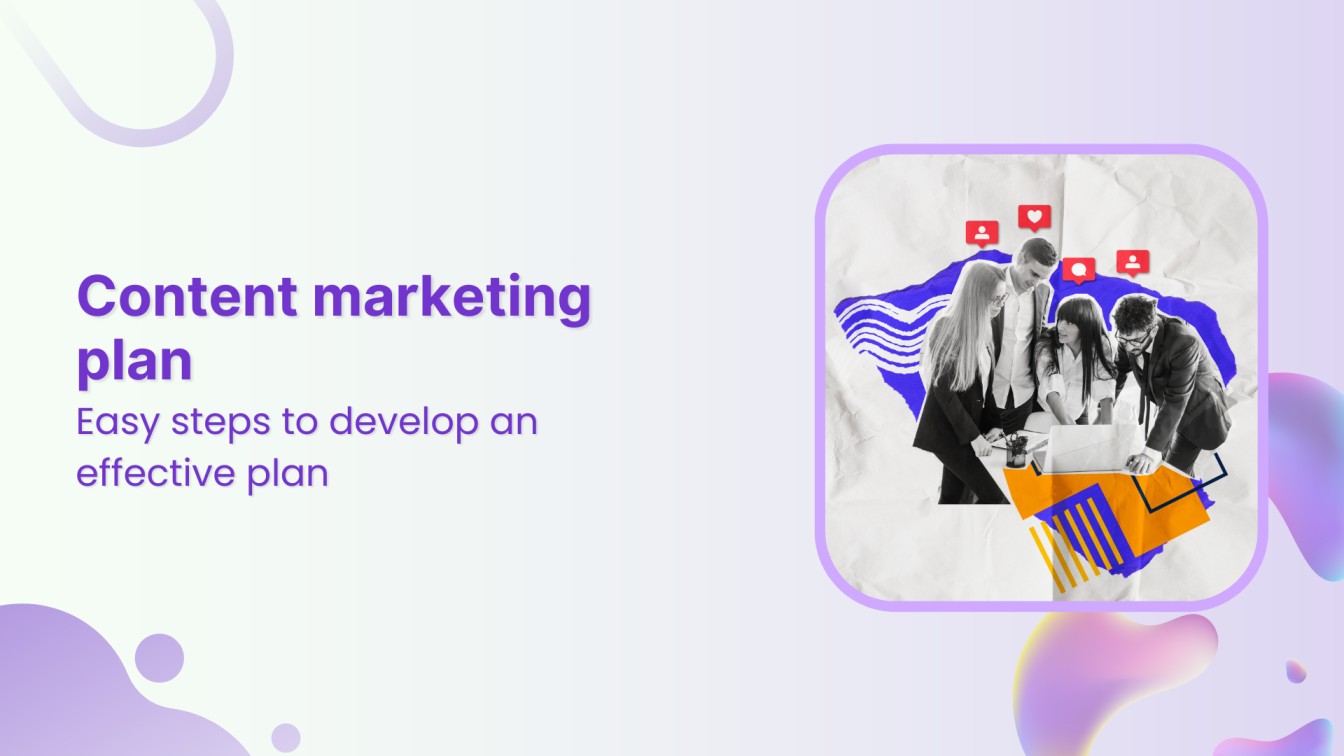
Let’s say you have a ton of content on hand: how-to articles and videos, blogs, and product images. How are you going to present everything to potential clients and customers? Do you have any particular objectives for your content? Maybe you’d like to generate more leads. Consider increasing your social media presence and brand recognition. You require a content marketing plan for that.
Content marketing is a marketing strategy that enables brands and individuals to reach out to the audience through different types of content, such as written content, audio, video, and images. The objective, however, is to attract, engage, and convert the audience into paying customers.
If you haven’t had a chance to create a content marketing plan or want to polish up your current content marketing plan, this is the perfect opportunity to tweak your content plan right away.
Before digging into developing a content marketing plan, let’s explore some basics.
Simplified social media marketing for individuals & agencies.
Try ContentStudio for FREE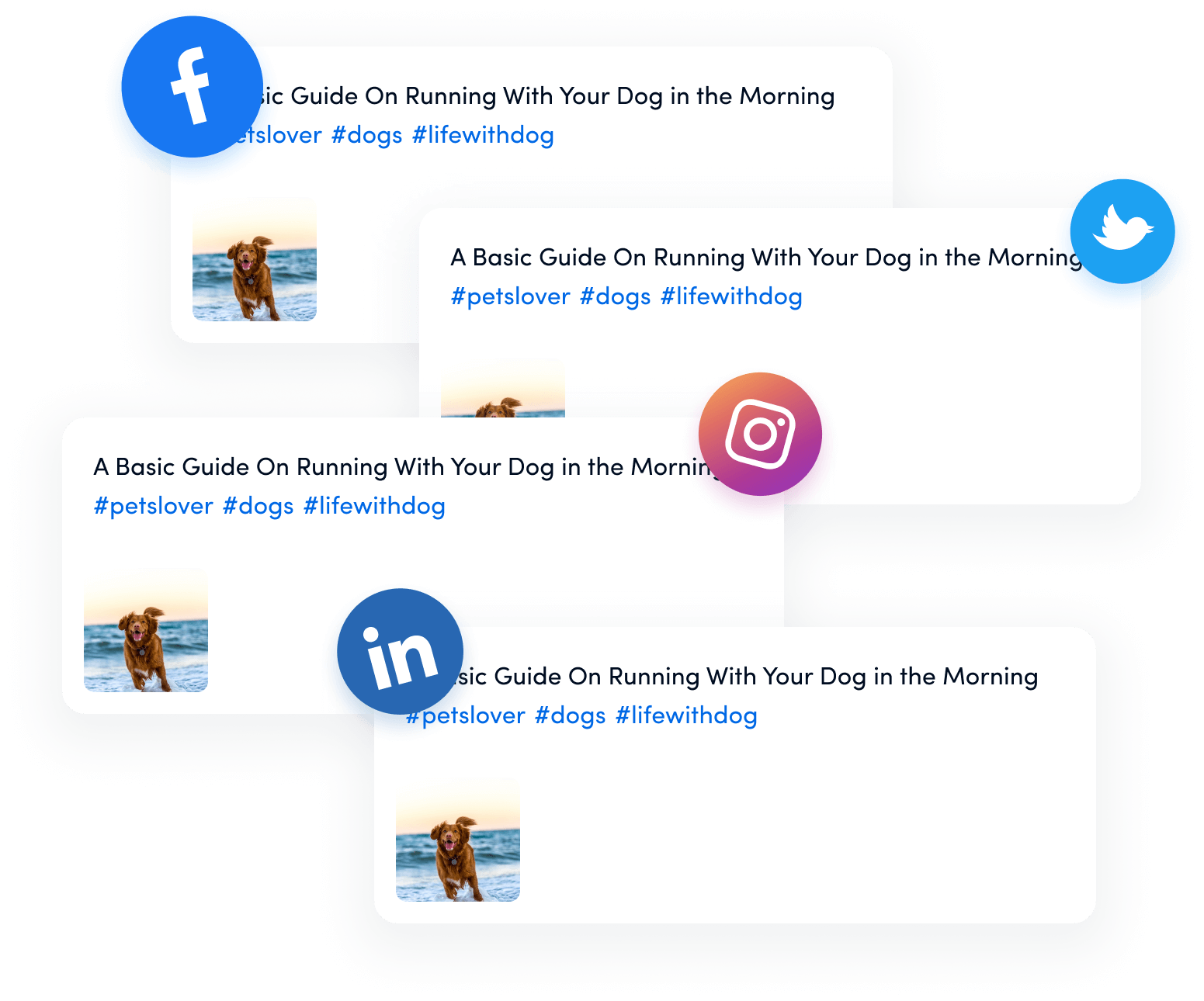
What is a content marketing plan?
A content marketing plan is a strategic roadmap that outlines how a business or organization will create, publish, distribute, and manage content to achieve specific marketing goals. It serves as a detailed guide for content creation and promotion efforts, ensuring that the content aligns with the overall marketing strategy and effectively targets the intended audience.
Why should marketers have a content marketing strategy?
Content marketing is done haphazardly without a plan. If you have ever engaged in the following activities, you require a content marketing strategy.
- You are active on many social media channels, but you’re not sure what kind of content is most effective for each.
- You’re not sure what subjects your audience finds most interesting.
- You notice that you haven’t posted for the day and are unsure what to post about.
A content marketing plan offers a foundation for all of the aforementioned situations and many more. Additionally, after a strategy is implemented, data can be used to ensure its effectiveness.
No matter how big your business is, you will eventually need content marketing to promote your goods and services. Having a plan also ensures that everyone stays on the same page if you keep doing this. You’ll have that material fully sorted and planned, saving you time to focus on community involvement rather than having to create a post on the spur of the moment.
How to create a winning content marketing plan
There are some fundamental elements to developing an effective content marketing plan. These elements strengthen the content marketing efforts and bring clarity to the process. Let’s dig deeper and examine the step-by-step process of creating an effective content marketing plan.
1. Clarify your purpose
Content marketing is a good way of starting a conversation and helping out the audience through your content. However, the biggest mistake you could make is to turn a blind eye to your purpose.
Clarifying the purpose before planning your content strategy is essential. You need to know what problem you will be solving for your audience. That way, you can tailor the content to their needs and wants.
The goal is to offer them something they want and need to solve their problems.
2. Setting the goals and KPIs
It won’t be effective if someone jumps in and starts creating content without deciding its purpose. Goal setting is the first stage in creating any content marketing strategy, and it determines the direction of the content marketing plan.
With your content, what goals do you hope to accomplish?
Your aim will shape your plan, so be sure to identify it upfront.
Possible goals could be:
- Make a name for yourself in your niche as a thought leader.
- Over the next year, you aim to increase the search engine by 50%.
- Attain a 20% yearly increase in revenues
- Increase client retention by 40%
To begin with, you need to track 20 social media KPIs to measure success.
It clarifies whether you want sales, subscribers, downloads, or anything else from your content.
3. Identifying the audience
One can’t build an effective content marketing plan without knowing the audience. If you aren’t sure who you want to contact, then spending your time, energy, and resources on content creation is useless. So, figure out the right audience and hone your content strategy accordingly.
The next stage is to create a persona for your typical client. The persona you build should include the typical demographics of age, gender, location, and income. It would be beneficial if you also considered the interests, worries, and motivations of your target audience.
For example, suppose you’re targeting people in the 25-35 age bracket who live in the United States and are looking for information on yoga retreats in India. In that case, that is the audience profile that you would create when developing your content strategy.
Also read: Short bio examples that will impress your audience
4. Leveraging the content
A clear sense of direction always pays off. Therefore, one benefit is that you can leverage your content to find a new audience, solve the audience’s problems, build a connection with prospects, and engage existing customers. Many companies use content to grow their social media followers just because they publish a ton of content; it helps them communicate with the audience.
5. Choose a market segment
Marketing is a perception-building strategy, but it becomes ineffective when you aren’t clear about your market. No matter how much you spend on content marketing, you will lose track if you’ve taken the wrong turn. So, it’s essential to know the target audience before creating content.
The market segment doesn’t have to be complicated. However, it’s understandable that some due diligence is required before anyone jumps to a conclusion. So here are some of the critical indicators one should consider analyzing before presuming the market segment:
- Who are you?
- What do you do?
- How does your product work?
- Who is your customer?
Once you understand the indicators mentioned above, you’ll be in a better position to identify your market segment.
For instance, we at ContentStudio know our audience. Therefore, we create content on our blog that is specifically relevant to our target audience.
6. Audit your existing content
An audit addresses this question and facilitates the evaluation of your content. First, make a list of all your current material. If the quantity is excessive, establish a time limit, like six months or a year. A data set that provides a thorough analysis of the content you provide is essential.
You might discover information for your blog articles you were unaware of by conducting a content audit. You might be able to find duplicate content on your website with its aid. Look at the following during the audit:
- Subject or topics: On what topics are you posting?
- Content categories: What kinds of articles are you publishing?
- Social media channels: Where are you disseminating the material?
- Performance: What is the performance of your posts?
You ought to be able to observe some patterns about which channels and content are doing better than others once the documentation is finished.
Related read: A complete checklist to audit your Instagram profile
7. Conduct topic ideas and keyword research
Finding out what your audience is searching for online is the next step after determining your goals, getting to know them, and having done a complete audit of your existing content. You must conduct research on the keywords that users of Google and other search engines use. Investigating the number of searches for the terms you think are relevant is a good place to start. You’ll probably get some unexpected results from your keyword research, along with some fresh content ideas.
Select broad topic ideas for your writing and then pinpoint specific subjects that fall under each theme. It is crucial to make sure the themes you select align with the organization’s overarching vision and strategy. Here’s how ContentStudio has the blog section divided into different themes and topic ideas.
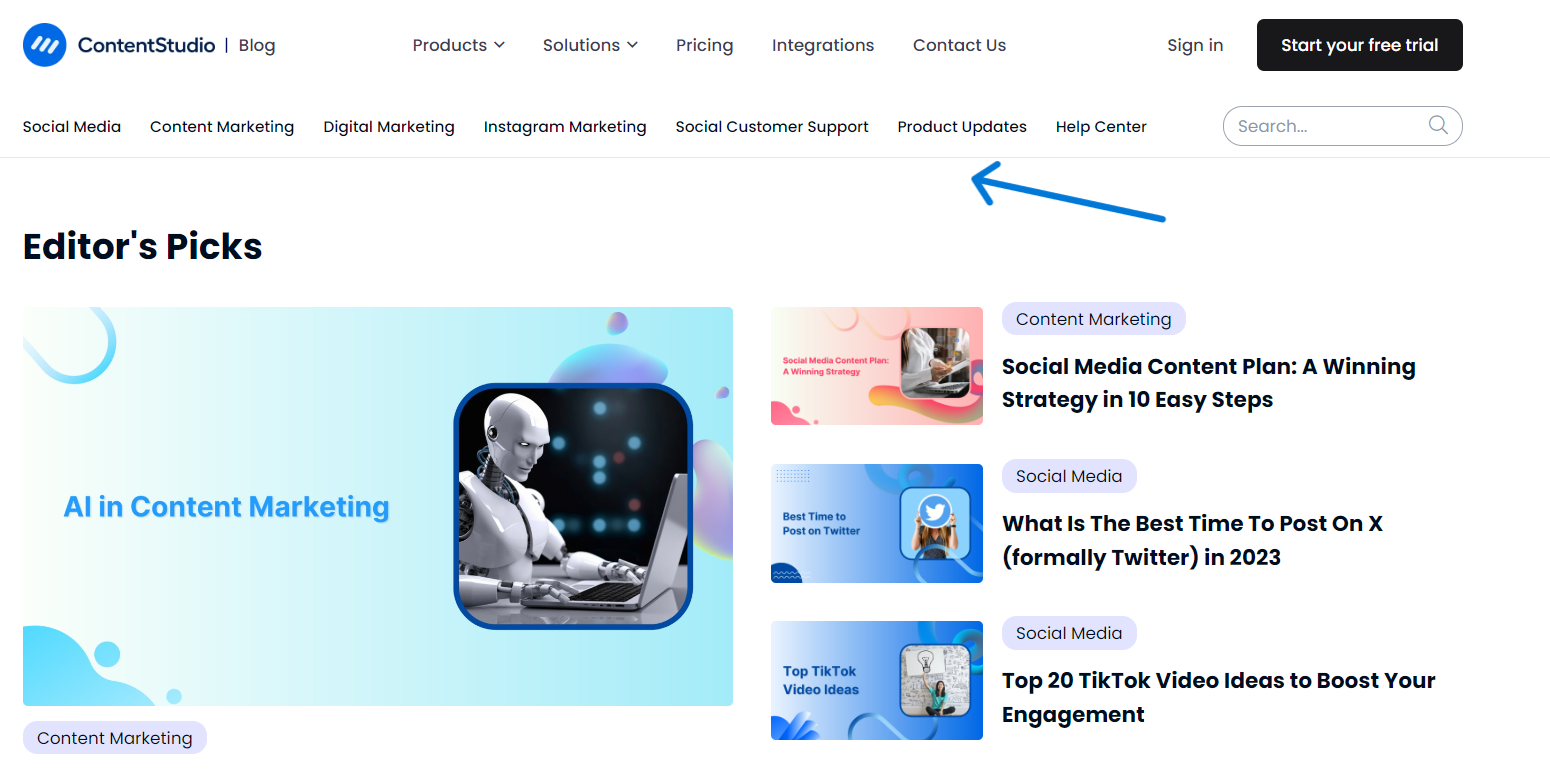
8. Content relevancy
You may notice that businesses usually stick to their niche when it comes to content creation. For example, have you ever read an article on cars or cameras on this blog? You didn’t because we know what readers expect from us and what content we should create to attract and engage the audience.
So, the point is to specify your market segment and create content for them. Unfortunately, many of us don’t pay attention to this and bypass this step instead.
9. Prioritize high-potential topics and keywords
You probably have hundreds of possible topics to choose from at this point. Which ones, though, ought you to go after first?
Make decisions based on your aim. The objective is always to increase search engine traffic.
Thus, we’ll have to give subjects that see a decent amount of monthly searches priority.
Ensure that the topics you select fit inside your ranking range. In other words, you shouldn’t have too much trouble ranking for them. Examine the “KD” column to determine how difficult it is to rank each topic on Google. The greater the proportion, the more intense the competition. Here’s how to examine it:
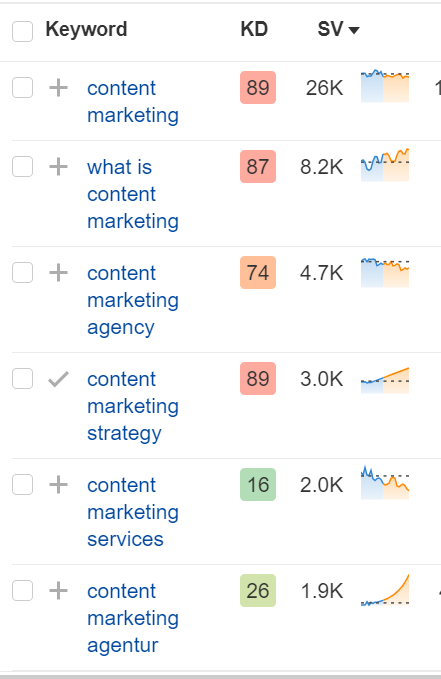
Use the same reasoning when choosing keywords for YouTube videos, as YouTube SEO is equally important.
10. Select content formats
Before developing an effective content marketing plan, you need to know what makes you unique. As mentioned earlier, your goals are vital in determining which type of content will work best for your business. There are lots of content formats you can choose from:
- Blog posts
- Audio or podcasts
- Videos
- Vector images or infographics and more
Next, you’ll need to decide which format will work best for your target audience.
In other words, a brand must know what kind of content could help the target audience and why it will positively impact them. When a brand figures this out, the rest of the process becomes easier.
Related Read: Instagram Reels Vs. TikTok: Which is better for content marketing?
For example, if you’re a bakery and want to sell more desserts online, you could post how to make the perfect cupcakes for those upcoming holidays. This content would be excellent for attracting new customers who love baking and don’t have time to do it themselves. Or, if you offer consulting services, you could make a video showing people how to set up their company’s social media accounts. Again, your goal is to attract more customers and use the content to convert them into paying customers.
11. Select publishing channels
Knowing the channels where you’ll publish your content is essential to your strategy. The channels include Facebook, Instagram, TikTok, LinkedIn, Twitter, YouTube, Medium, and blog posts, just to name a few.
Generally speaking, you should begin your content marketing strategy on the distribution channels where you currently have a strong online presence. You need to have discovered some trends on the most effective outlets for your content during the audit.
See where the referral sources are coming from by looking at the analytics on your website for more information. Are readers finding your blog article through a social media post or newsletter? Do people use search more to locate you? It will be easier to concentrate your efforts on those channels if you know where your audience is coming from.
Usermaven makes this really easy for you to identify:

The channels that work well for your company depend on the type of content you produce. For example, if you create videos, YouTube would be the best channel for you. On the other hand, if your company writes blogs about cooking recipes, Medium would be the best platform for publishing these recipes.
12. Create a content calendar
An effective content calendar is essential to your plan. You require it to organize your material. It should, at the absolute least, be able to keep track of the topics and material you wish to publish and when. An improved content schedule will also monitor the progress of every piece of material, its distribution, creators, and final performance following promotion.
Having a content calendar will ensure that your content is fresh and relevant all year and that you are always creating new content.
Try: Social media content calendar
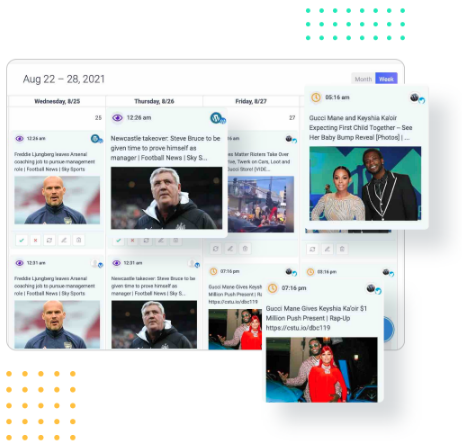
Social Media Calendar for Digital Agencies
Organize all your social posts and visualize your client’s social media content plan with an interactive Content Calendar
14 days free trial - no credit card required13. Create valuable content
Creating content is the first step in developing an effective content marketing plan. But just creating content isn’t enough in content marketing. Instead, it should be valuable for the audience, too. Unfortunately, some bloggers and SEOs make this mistake; they often get carried away by keyword selection and pump out content so much that they ignore its quality.
Sustainable content delivery is necessary, but the value of the content is imperative to content marketing.
There are four aspects of cementing the deliverability of value through content:
I. Relevant topics
Relevant topics seem apparent when creating content, but bloggers and brands often go off the track. To specify your target audience and decide whether or not the topics are best for them. The reason it’s important is that content creation takes time, money, and energy, so you might not want to waste all those things.
II. Providing solutions
The best way to create valuable content is to provide solutions. Many options exist for content creation, such as how-to tutorials, listicles, product reviews, and case studies. The purpose should be to give away the solutions.
III. Well-written content
There are many pillars of creating valuable content, such as a great topic, clarity of message, and providing a solution, but if the content isn’t well-written, it won’t work. Readers won’t continue to read if there are grammatical errors or the content is stretched out just to fill the pages. So, make sure that the content is well-written.
IV. Audience engagement
One essential element of delivering value is audience engagement. Sometimes, the audience needs to talk to you after consuming your content for further explanation. Engagement through blog comments and tweets can help convey the crux of the message. Don’t underestimate the power of audience engagement.
Also read: How to calculate social media engagement rate?
14. Conduct a competitor analysis
Look into the competition you may encounter while trying to draw in your intended audience. But remember that you won’t be up against just your usual rivals for people’s time and attention. ContentStudio is one of the best tools for providing a complete analysis.

Content on the same subjects as your postings may also be found on news, reference, and entertainment websites. Make a note of the kind of content your rivals are creating and what seems to have worked best when you conduct research on them. Discover the keywords they are aiming for as well.
Also try: Free Instagram competitor analytics tool
15. Plan your content promotion
A well-defined plan for promoting your content to reach your intended audience should be part of your content strategy.
Here are some tactics for promoting content:
- Email marketing: Inform subscribers about fresh content and entice them to interact with it using your email list.
- Social media: Share your material with your audience to increase interaction on different social media platforms.
- Advertising:. If you have the necessary funds, you can also utilize Google ads and/or meta-advertising options to increase the visibility of your content and reach more people.
- Content syndication: Post your material on other websites (such as Medium) to reach new audiences.
- Marketing using influencers: Collaborate with well-known bloggers and/or social media stars to distribute your content through influencer partnerships.
Optimization for search engines (SEO): Enhance your content for search engines (SEO) to appear higher in search results. - Content curation: It involves combining your own content with the industry’s best content. Content curation plays a vital role in your content promotion strategy.
Not every strategy will work for every type of business. Additionally, you should prioritize the promotion channels based on your budget, audience preferences (i.e., the places where your audience is actively consuming content), and goals.
Social Media Content Calendar
Stay consistent and organized with Contentstudio’s social media content calendar for marketers and agencies.
Get Started for FREE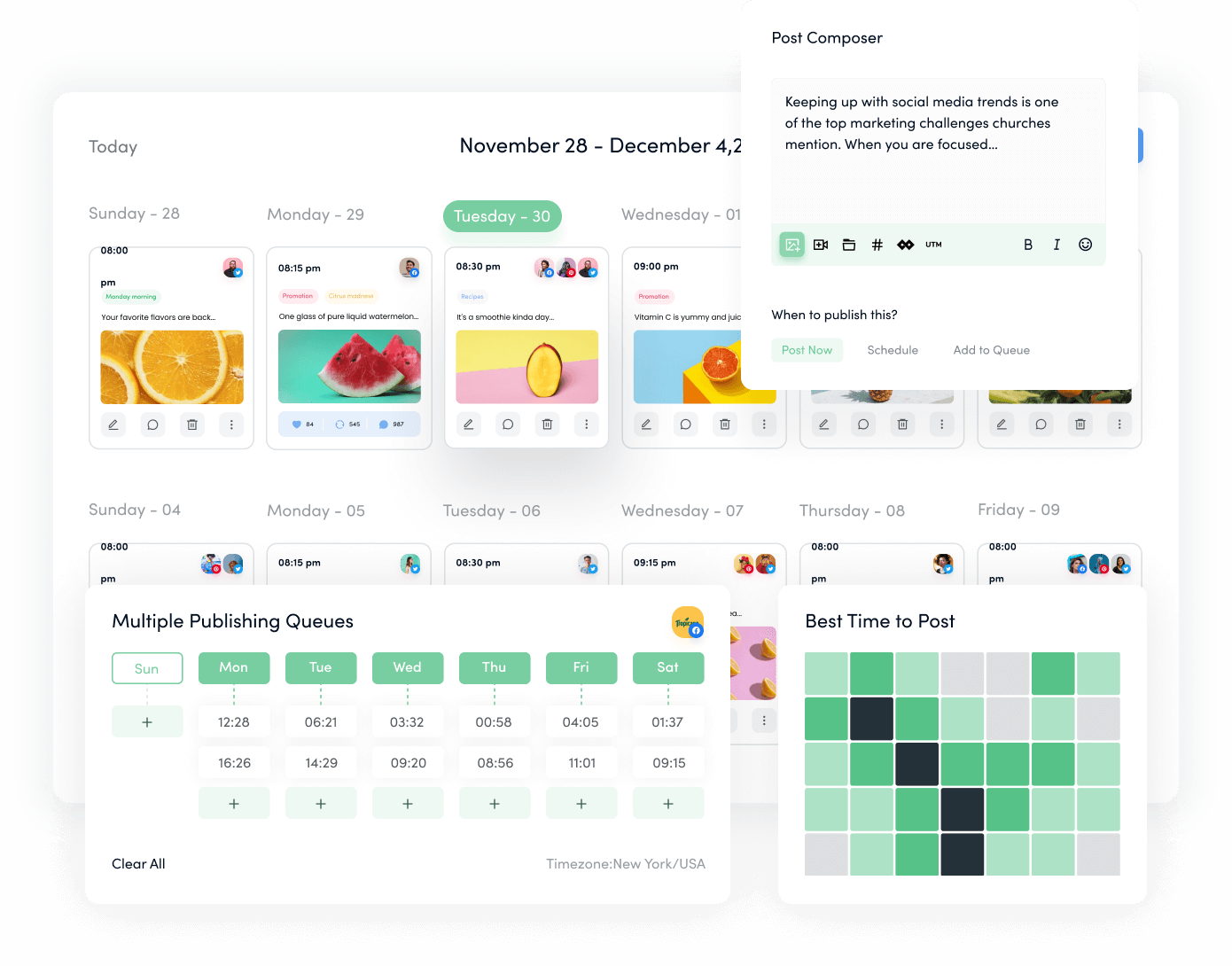
16. Engage through every medium
Content marketing doesn’t only mean creating and publishing content; instead, the audience’s engagement has a huge role in it. So now, we’ll look at audience engagement, especially what we can do to get started with engagement and where to begin.
You don’t have to do anything extraordinary to pull this off. Instead, it requires communicating more, talking to people, responding to their queries, and using multiple mediums to interact.
To make your content marketing campaign effective, you have to engage people so that your content gets more attention on the platform. Here are three simple ways to start engagement:
I. Start conversations
Starting conversations may look tricky at first, but it won’t affect you much once you get used to it. I’d highly recommend sharing your content with a proper explanation and starting a conversation with people who like or comment on your content.
II. Answer queries
If someone asks a question through a DM or a comment, it’s a great way to communicate, especially if the question is being asked in the comments section.
P.S. Also know how to positively handle negative comments.
III. Thank loyal fans
Thanking fans who show up to consume your content and respond to your questions could be an excellent way to build effective communication.
You can also submit your articles to websites like Medium or Quora if they meet the eligibility criteria of those websites. This will get you exposure, increase your brand visibility, and build brand awareness.
Social Customer Service
Never miss a message or comment from your social media audience. Try ContentStudio’s Inbox.
Get Started for FREE
17. Look into budget, tools, and resources
Knowing how much capacity you have to work with is crucial for creating this content marketing strategy. This covers your available resources, staff members, and any third-party companies or freelancers you may hire.
While it can be difficult, creating creative content remotely is not impossible. At this phase, determine what resources you currently have and what you’ll need (which may require authorization).
The majority of content marketing strategies require the following:
- Who is producing the material?
Where to organize, keep, save, and publish your information using a content management system (CMS)
Who is in charge of production and themes as the content manager?
Data gathering methods include reports, content analyzers, and any other content marketing tools used in content marketing.
18. Analyze and monitor your performance
It’s important to analyze the outcome of the strategy or the investment you’ve made after a specific period.

Analyze, Understand, and Improve Your Social Strategy
Stack your key social metrics against those of your competitors and make targeted steps towards social media success.
14 days free trial - no credit card requiredCertain metrics must be analyzed, such as:
Keyword selection: Go through your website statistics and see for yourself how your selected keywords are performing. It’ll help you comprehend whether or not you chose the right keywords to use in your content. Keywords don’t necessarily mean they only matter in the content; they influence lots of things, such as topics, meta tags, image tags, and URLs.
Conversion rate: The conversion rate is the ratio of sales to total clicks. If the conversion rate isn’t impressive, you might want to make a few changes here and there. You don’t get to the perfect combination of keywords, topics, and market segments immediately; it always takes time to achieve that.
Customer acquisition: Customer acquisition is a necessary element of content marketing, but the ultimate goal of content marketing is engagement and attraction. It doesn’t mean sales aren’t important in the process. What content marketing does is that it builds your loyal fan base, which eventually paves the way for more paying customers.
Outcome analysis is essential because it allows you to analyze what’s working and what’s not working. If things aren’t going well, it’d be better to alter your strategy after a period rather than keep pushing the same strategy. So, outcome analysis is like a short break when you’re on a road trip and pull over for a cup of coffee and refueling.
Social Media Analytics
Fine-tune your social media strategy for success with in-depth analytics and white-labeled reports.
Get Started for FREE
19. Make the most of User-Generated Content (UGC)
User-Generated Content (UGC) refers to any content—images, videos, text, reviews, or testimonials—created by your customers, followers, or brand community rather than by your team. Incorporating UGC into your content marketing plan can significantly enhance authenticity, engagement, and trust among potential customers. People trust people, and when they see real users enjoying your product or service, they’re more likely to take action.
How to execute:
- Launch social media challenges or branded hashtag campaigns to encourage submissions. For example, a fashion brand might ask users to share their day’s outfit with a branded hashtag.
- Run photo contests or giveaways to incentivize participation.
- Feature UGC in your email newsletters, product pages, or highlight reels on Instagram and TikTok.

20. Implement a content repurposing strategy
Creating high-quality content requires time, creativity, and resources—so why not extend its lifespan and maximize its impact through repurposing? A single blog post, for instance, can be sliced into multiple social media graphics, short-form videos, podcast episodes, infographics, or email newsletters. Repurposing content ensures your message reaches a broader audience across diverse platforms, catering to different content consumption preferences.
How to execute:
- Take evergreen blog content and turn it into an animated explainer video or a webinar topic.
- Convert statistics or key quotes from your article into visually appealing quote cards for LinkedIn or Instagram.
- Compile a series of related blogs into an eBook or downloadable guide for lead generation.

Benefits:
- Boosts SEO by distributing similar keyword-rich content across platforms.
- Saves time and production costs while maintaining consistency.
- Expands content reach to audiences who prefer different formats (readers, viewers, listeners).
Conclusion
The idea behind this blog post was to give you a roadmap for getting started with content marketing. The 20-step approach illustrates that creating a content marketing plan is a continuous process rather than a one-time event. As you build your own plan, you’ll discover more about your audience and what kinds of material resonate with them, so you’ll need to make frequent revisions to your original plan.
Many of you might not be creating content—some might be doing it wrong. Now is the time to put these steps into practice and be your own hero!
Plan, schedule, share, and analyze content for 15+ social media channels.
Try ContentStudio for FREE
FAQs
What is the content plan in marketing?
A content marketing plan is a strategic roadmap that outlines how a business or organization will create, publish, distribute, and manage content to achieve specific marketing goals.
What are the 7 steps of content marketing?
- Clarity of your purpose
- Setting goals and KPIs
- Identify the audience
- Leveraging the content
- Choose a market segment
- Audit your existing content
- Conduct topic ideas and keyword research
What should a content marketing plan include?
A strong content marketing plan typically includes:
- Clear goals and KPIs
- Defined target audience personas
- Content themes and topics
- Content formats (e.g., blogs, videos, infographics)
- Publishing schedule/calendar
- Promotion and distribution strategies
- Tools and performance tracking methods
How often should I update my content marketing plan?
You should review and update your content marketing plan at least quarterly. This ensures your strategy stays aligned with current market trends, audience behavior, SEO updates, and business objectives. Frequent evaluations help identify what’s working, what needs improvement, and where to pivot.
Recommended for you
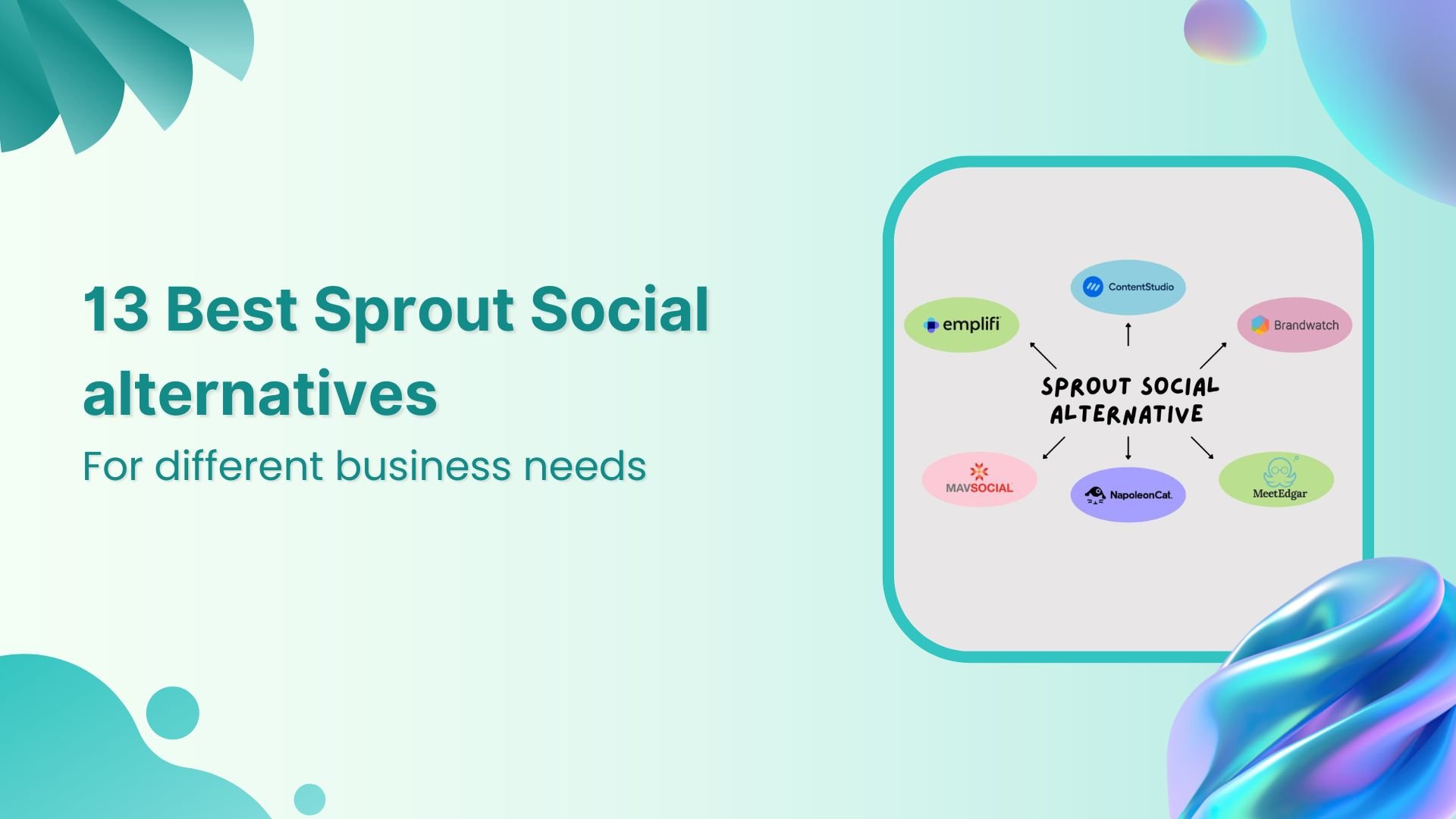
13 Best Sprout Social alternatives for effective social media management
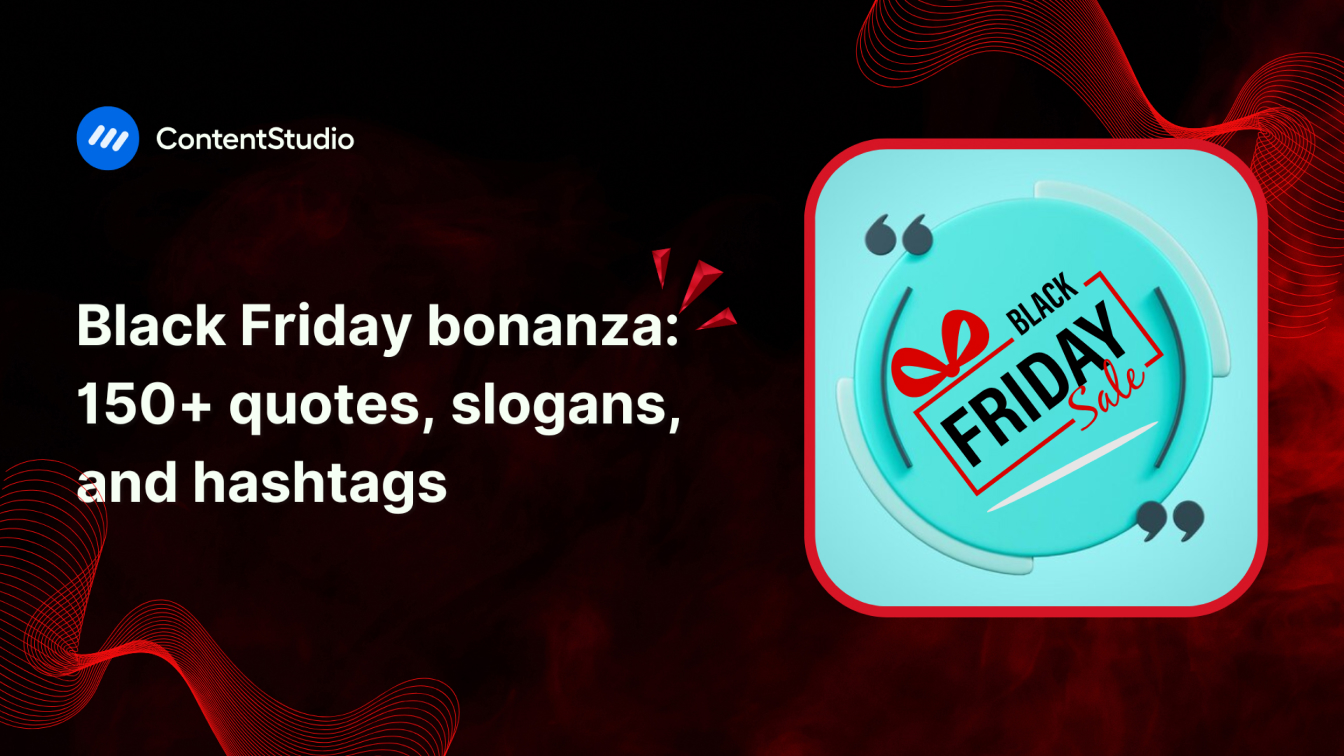
150+ Black Friday quotes, hashtags, and slogans to boost sales

Why is an integrated marketing campaign beneficial for your brand?

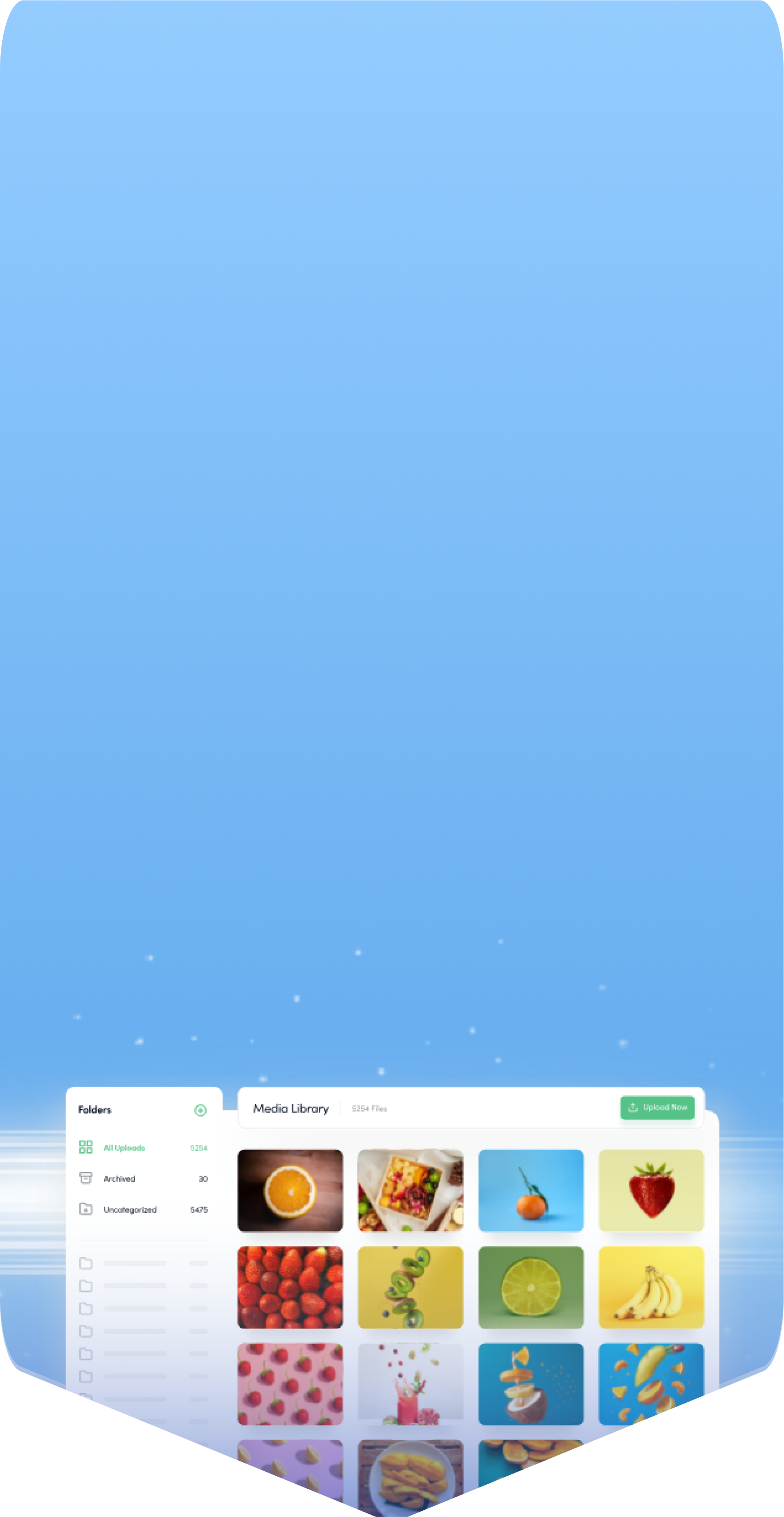
Powerful social media management software
14-day free trial - No credit card required.
